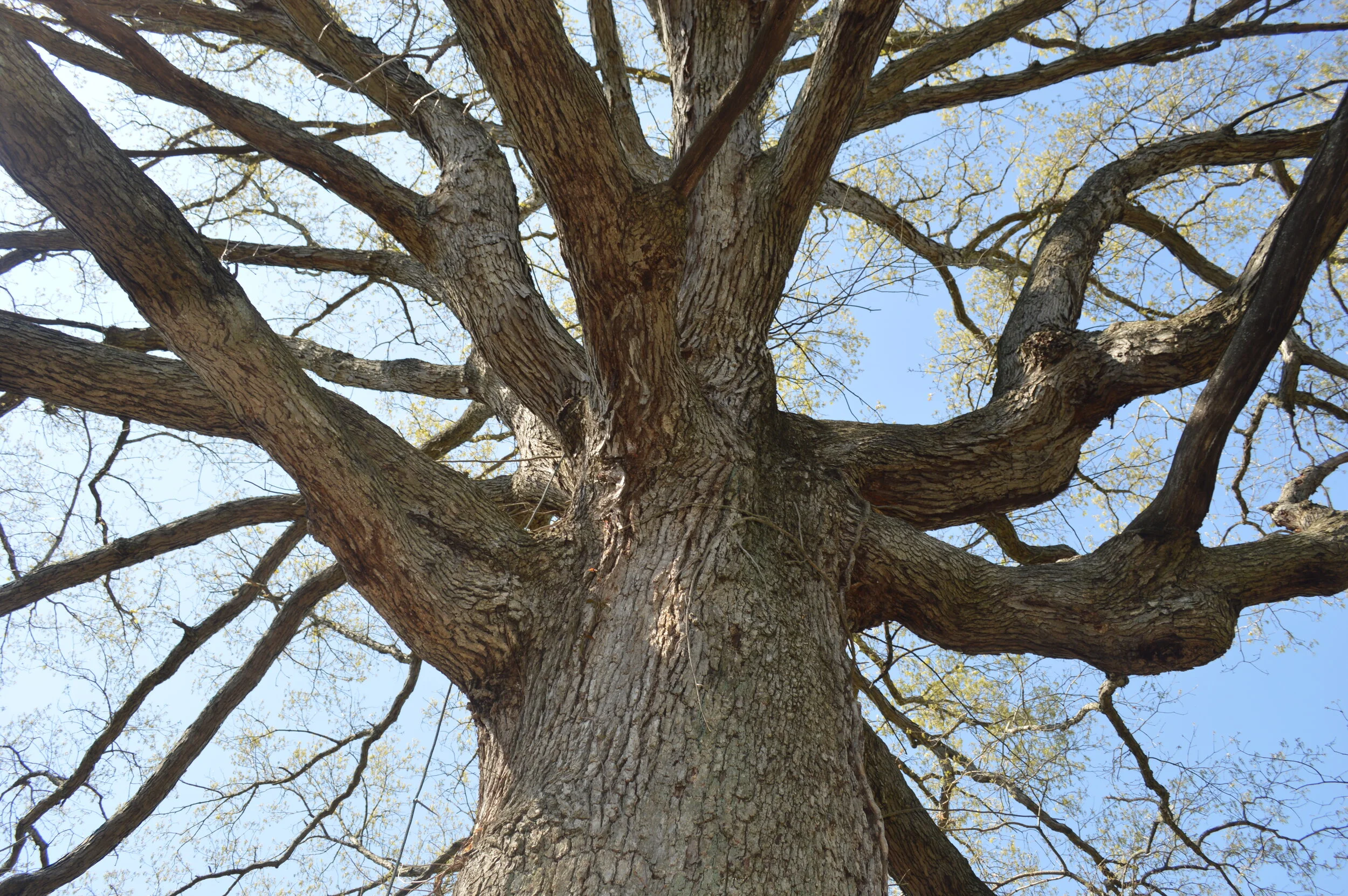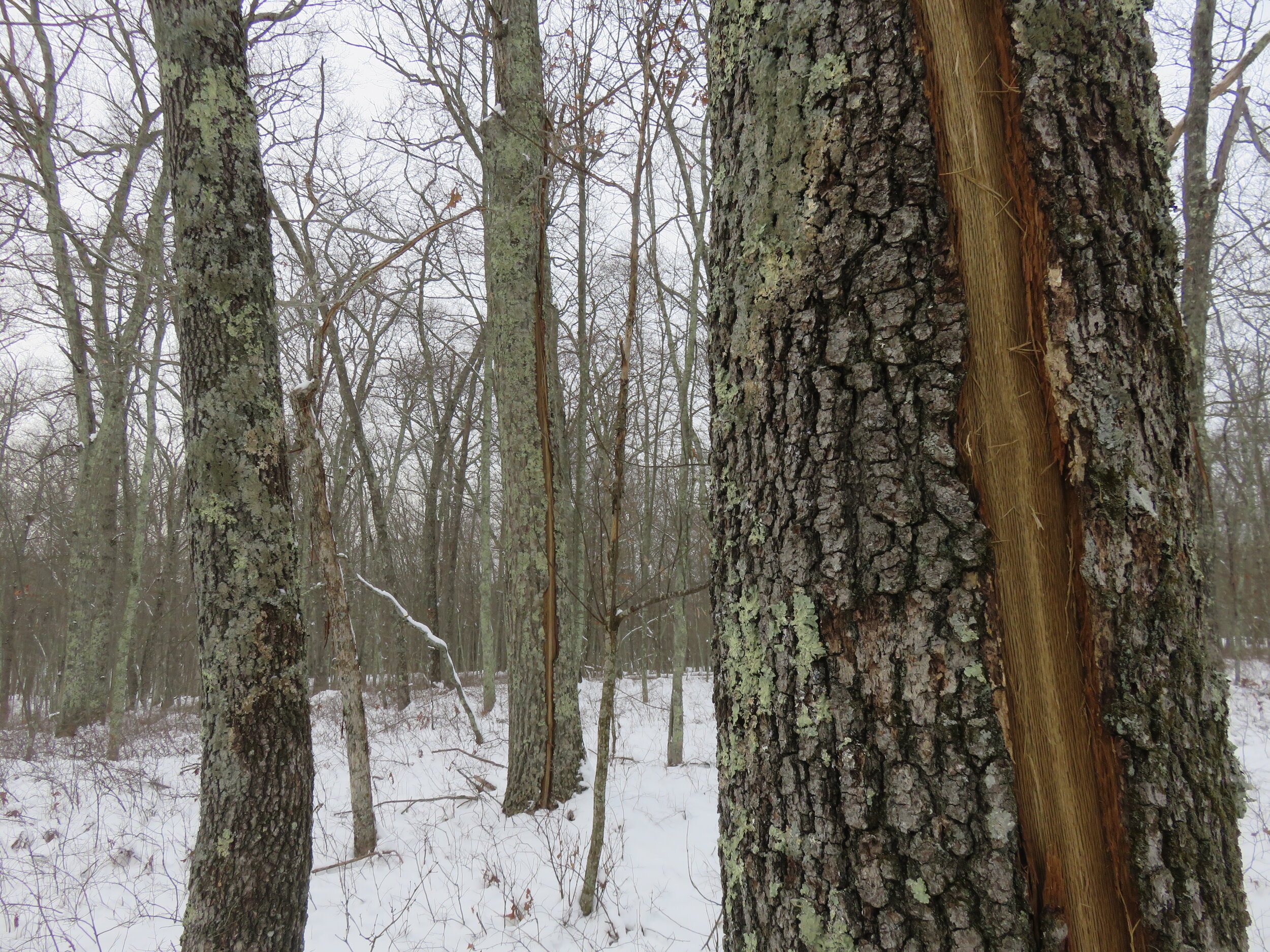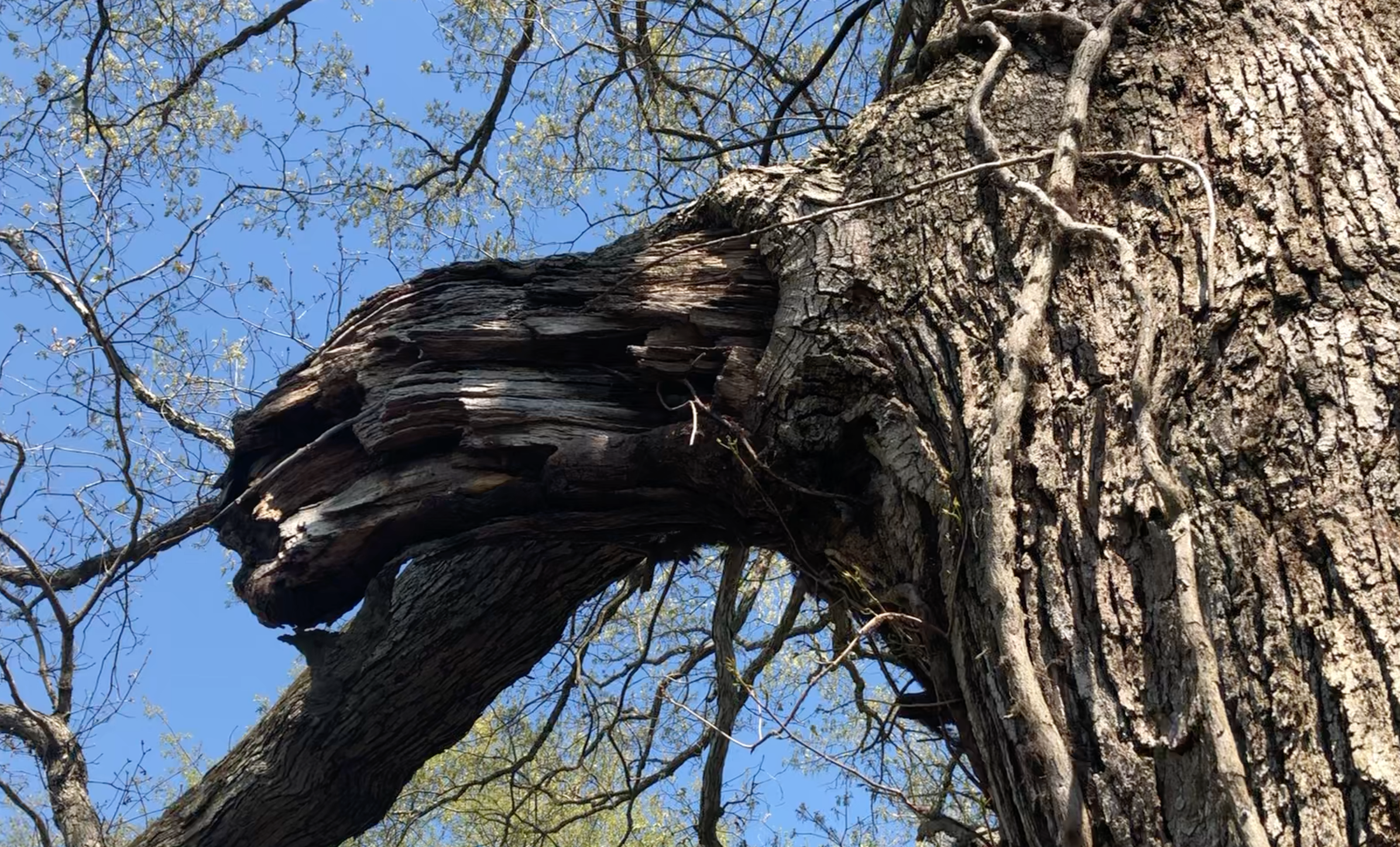Caring for Old Trees
Emily Ellis
There is something magical about ancient trees, and not only because they’ve managed to grow incredible sizes, surviving centuries of disturbances by the weather, human and animals. Old trees have silently witnessed significant periods in human and environmental history, and in addition to providing shelter and food for generations of wildlife, have also supported treehouses, shaded picnics, and carried swings. They’re important to both our culture and our natural world - and, like most organisms that have reached a great age, require special care.
To celebrate Arbor Day this year, we’re listing several ways to take care of old trees in your community or on property. If you’re interested in a more in-depth look at the care, ecology and culture of large old trees, sign up for one of our upcoming Ancient Tree courses!
This June, ecologist Michael Gaige - the author of An Oak Spring Landscape - is leading two courses on old trees. The hybrid course “Ancient, Venerable, and Large Old Trees: Ecology and Conservation” will be held from June 3 - June 12th, and a 1- day field course, “Large, Old Trees of the Virginia Piedmont,” will be held on June 6th and 13th. Both will take place at Oak Spring and Rokeby, as well as other nearby locations.
Protect against storm Damage
Photo by Flickr user Johnathan Blacksheep
It’s always sad to see an ancient tree that has survived hundreds of years of weather events, only to be killed by a lightning strike or other forms of storm damage. Large old trees are particularly susceptible due to the fact that they often stand high above the surrounding landscape, increasing their exposure to wind, ice, and lightning. Sometimes, there isn’t much that humans can do to prevent prevent damage if a storm is severe.
At Oak Spring, one of the storm precautions our Arboriculture, Conservation, and Landscapes team takes is bracing some of our large, iconic trees - particularly those that are close to houses and other structures, or are in a geographic location where they are vulnerable to damage. The ACL team also contracts specialists to install lightning protection systems in order to protect older trees that are close to buildings, or are particularly special to Oak Spring.
Mind the Roots
Old trees take a lot of space both above and under the ground, making construction in their vicinity a challenge. The complex root systems we can’t see are more far-spreading than the branches themselves. Close to the surface are fine, small roots that can be easily damaged by soil compaction, cutting from excavation, and grade changes. Extensive damage can cause a centuries-old trees to decline in health or even uproot - a loss for both the environment and property value.
“We can think of the roots going out at least as far as the widest branches,” said Michael Gaige. “So if you’re going to put in a sidewalk or a driveway, try to stay away from those roots.”
Photo by Flickr user Scott Robinson
If you have a building project planned near a large old tree, getting an evaluation from a certified arborist beforehand is a good way to prevent stress and injury. Arborists can also advise you on ways to promote growth and health after construction is complete, such as by mulching and soil aeration. Even simple measures, such as erecting a fence around the tree during construction, can prevent a lot of heartache later on.
Watch out for Disease
Like all aging organisms, elderly trees aren’t going to look perfect. They naturally develop hollows and cavities that are enormously beneficial to wildlife, and can even “self prune” if a branch is no longer useful. However, inspecting trees regularly and taking certain preventative measures can help them protect themselves against disease and damage.
A 250 year old white oak at Oak Spring healing a broken branch to prevent disease from entering.
Oak Spring’s Arboriculture, Conservation, and Landscapes team conducts annual inspections of property’s large and iconic trees, pruning any diseased brush and wood in order to make them more open for airflow and to help with disease and fungus control. Occasionally, the team will also fill cankers with a foam agent and a sealant to help the tree heal. The Virginia Department of Forestry has a tree disease and insect guide that can help you identify and treat common problems.
Plant new Trees
“ The best time to plant a tree was 20 years ago. The second best time is now.”
Oak Spring’s Arboriculture, Conservation, and Landscape team at work last winter. Photo by Sarah Causey
Every elderly tree was once a tiny seed, and planting new trees is an important way to ensure that our environment doesn’t run out of these important organisms. If you have the acreage, try planting long-living trees species that are native to your region, says Michael.
“Finding a place out of the way - not near the house, not near the power lines - where you can plant a little grove of, say, white oaks if you’re from this area,” he said. “And hope that those can get to be 200, 300, 400 years old one day. “
In Virginia, white oaks and black tupelos are among the most long-lived tree species, with maximum lifespans of about 600 years. Eastern hemlocks can reach up to 800 yeas old, and bald cypresses have a maximum lifespan of a whopping 1800 years. Check out this handy chart from Virginia Big Trees for more information about the lifespans of different trees in our state.
Support Efforts to Protect Old Trees
Sadly, venerable old trees face a myriad of risks, from disease to land development to invasive species. Even if you don’t have any ancient trees on your own property, supporting or volunteering with organizations that protect and advocate for old trees can help keep these old “champions” standing. Virginia Big Trees has a tree-hunting program, American Forests has a national register of champion trees, and Loudoun County has its own big tree registry.
Curious to read about Oak Spring’s ancient trees? Check out An Oak Spring Landscape and A Rokeby Landscape by Michael Gaige.





